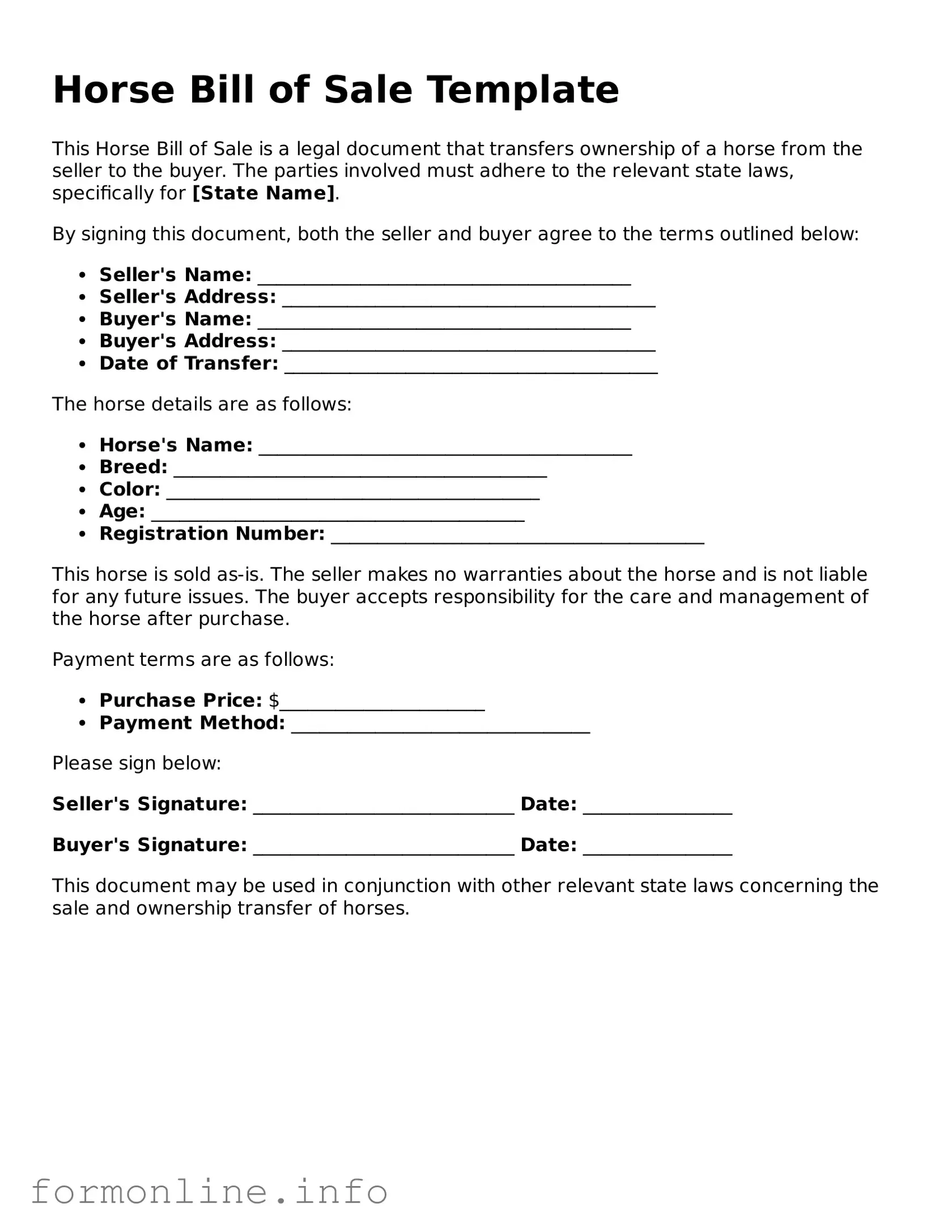The Horse Bill of Sale form is similar to a Vehicle Bill of Sale. Both documents serve as proof of transfer of ownership from one party to another. They contain essential details such as the buyer's and seller's names, the description of the vehicle or horse, and the sale price. Just like a Horse Bill of Sale, a Vehicle Bill of Sale can also include information about any liens on the vehicle and may require notarization depending on state laws.
Another document that shares similarities is the Boat Bill of Sale. This form is used when transferring ownership of a boat, similar to how the Horse Bill of Sale transfers ownership of a horse. Both documents typically include the vessel's identification number or horse's registration details, along with the buyer's and seller's information. They also provide a record of the sale price and date of transaction, which is important for both parties.
The Real Estate Purchase Agreement is another related document. While it pertains to real property rather than personal property, both documents outline the terms of a sale. A Real Estate Purchase Agreement includes details about the property, such as its address and legal description, akin to how a Horse Bill of Sale describes the horse. Both agreements also often require signatures from both parties to validate the transaction.
Similarly, the Pet Bill of Sale serves as a comparable document for the sale of pets. This form includes details about the pet, such as breed and age, much like the Horse Bill of Sale includes specifics about the horse. Both documents ensure that ownership is legally transferred and may include health records or warranties related to the animal.
The FedEx Bill of Lading is a crucial shipping document that provides essential information about the goods being transported. It functions as a receipt for the shipper and a contract between the shipper and carrier, ensuring the smooth handling of freight. For precise guidance on how to fill out the form correctly, please click the button below. You can find the necessary information in the Fedex Bill Of Lading form.
The Equipment Bill of Sale is also relevant. This document is used when selling equipment, such as farm machinery or tools. Like the Horse Bill of Sale, it captures the details of the equipment being sold, including make, model, and condition. It serves to protect both the buyer and seller by providing a clear record of the transaction.
Another similar document is the Motorcycle Bill of Sale. This form is specifically designed for the sale of motorcycles and includes information similar to that found in a Vehicle Bill of Sale. Both documents require the identification of the motorcycle or horse and include the sale price, helping to formalize the transfer of ownership.
The RV Bill of Sale is also comparable. This document is used for the sale of recreational vehicles and includes details about the RV, such as its VIN and condition. Like the Horse Bill of Sale, it serves as proof of ownership transfer and includes buyer and seller information, ensuring both parties are protected in the transaction.
The Firearm Bill of Sale is another document that shares commonalities. It is used to transfer ownership of firearms and includes details about the firearm, such as make, model, and serial number. Both the Firearm Bill of Sale and the Horse Bill of Sale provide a legal record of the sale and may require background checks or additional documentation based on state laws.
Finally, the Business Bill of Sale is relevant for the sale of business assets. This document details the assets being sold, similar to how the Horse Bill of Sale details the horse. Both documents include the sale price and the names of the buyer and seller, ensuring a clear transfer of ownership and protecting the interests of both parties involved.
